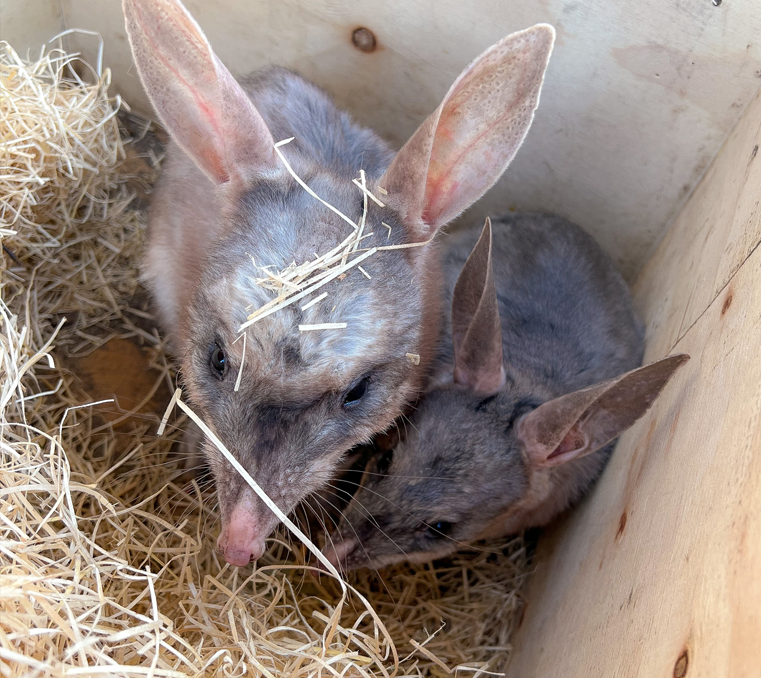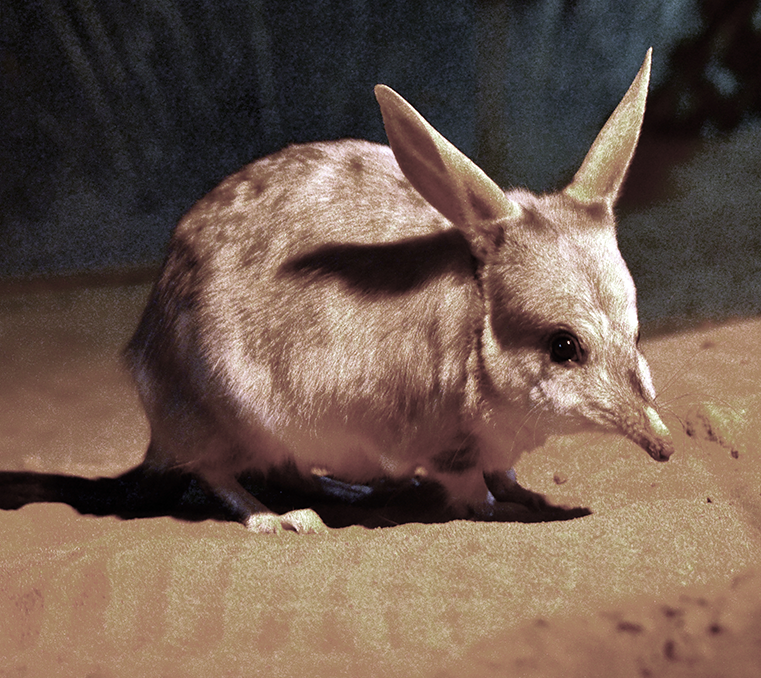Greater Bilby
Macrotis lagotis
The bilby is an iconic Australian marsupial, instantly recognisable by its long pointed snout, large and mostly hairless ears, soft grey fur and striking black and white tail which it holds in the air behind itself when it walks or gallops about. It has thick claws and strong forelimbs that enable it to dig rapidly in desert soil in search of food or for building burrows. Their burrows allow them to escape the harsh heat of their arid environment during the day, they can be as deep as 3 meters and are generally a spiral shape. Once they emerge on the cooler nights their large ears release heat from their body.
Males and females are sexually dimorphic, meaning there is a difference between the sex’s appearance, in the case of bilbies this is mostly in relation to their size. The males weigh up to three kilograms with the females weighing on average one to one and half kilograms.
A bilbies lifespan in the wild is relatively unknown due to lack of research however they have been known to live up to 10 years of age in captivity with an average of 6-7 years.
WHAT THEY EAT
At night, the bilby will leave the protection of its burrow to forage for food, using its long snout to dig up bulbs, fruit, seeds, fungi, witchetty grubs, worms, termites, small lizards and spiders. One of its favourite plant foods is the bush onion or yalka which grows in desert sand plains after fires.
By foraging for their food they play a fundamental role in their environment as “ecological engineers”. By digging through the soil they create disturbance which helps to promote seed dispersal and encourage fertile patches for plants to grow.
Bilbies don’t need to drink water regularly because, like the koala, they get most of their moisture from their food.
BREEDING
Bilbies will breed throughout the year, with the female bilby generally having one or two young, but occasionally, three babies are born at one time. The gestation period of a bilby is fourteen days, at the time of birth, the tiny babies, resembling a pink jellybean, will travel along the birth canal and instinctively climb up the mother’s coat into her backward-facing pouch. The pouch faces backwards so that when the mother is digging, the joey is protected as the pouch will not fill up with soil.
The joeys mature very quickly and by six months of age the young female is ready to produce a family of her own.












